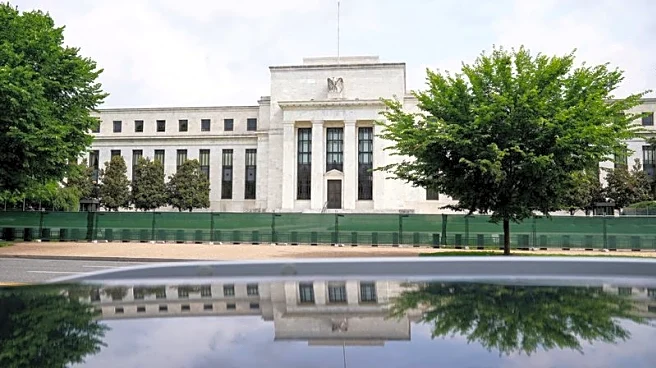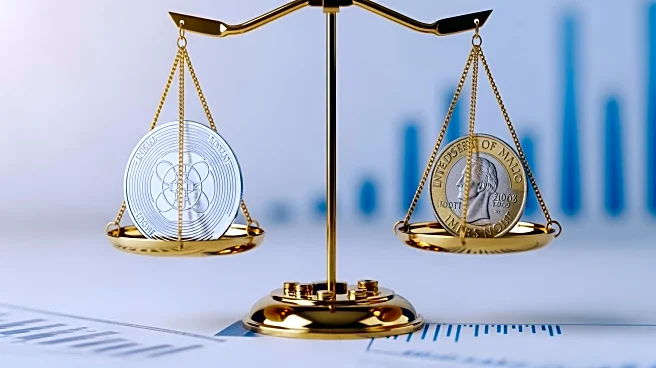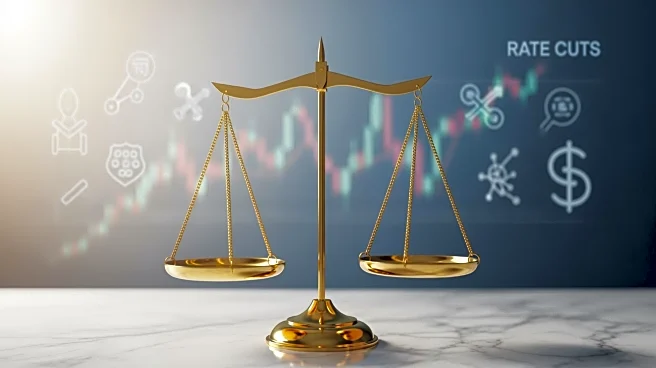What's Happening?
Federal Reserve Governor Stephen Miran indicated that the increasing demand for dollar-denominated stablecoins might contribute to lowering U.S. interest rates. In a speech in New York, Miran explained that the surge in stablecoins could affect the 'neutral'
rate of interest, potentially requiring the Fed to adjust its policy rate to avoid economic slowdown. He highlighted that stablecoins are boosting demand for U.S. Treasury bills and other dollar-denominated assets, which could lead to a structural decrease in borrowing costs.
Why It's Important?
Miran's remarks underscore the growing influence of digital finance on traditional monetary policy. The potential impact of stablecoins on interest rates is significant for economic stakeholders, including policymakers, financial institutions, and investors. If stablecoin growth leads to lower borrowing costs, it could stimulate economic activity and influence investment strategies. This development highlights the need for central banks to consider digital currencies in their policy frameworks.
What's Next?
As stablecoin demand continues to rise, the Federal Reserve may need to reassess its interest rate policies to accommodate the changing financial landscape. Policymakers and economists will likely monitor the impact of stablecoins on the economy and explore regulatory measures to address potential challenges. Miran's upcoming departure from the Fed could also influence the central bank's approach to digital finance.
Beyond the Headlines
The integration of stablecoins into monetary policy discussions reflects broader shifts in the financial industry, emphasizing the need for regulatory adaptation to digital innovations. This development may prompt ethical and legal considerations regarding the role of digital currencies in the global economy.














